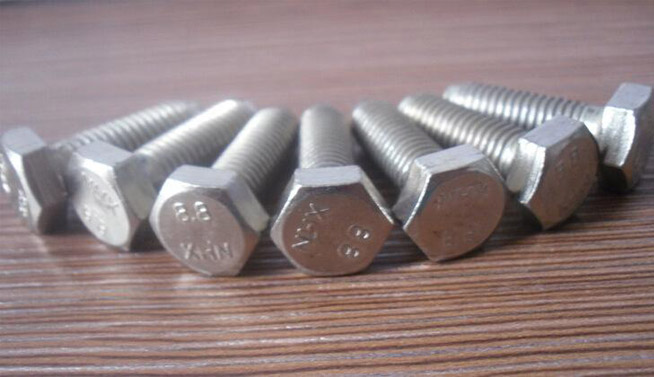Hexagon bolts are actually called in many ways. For example, they can be called external hexagon screws, or they can be called external hexagon screws. It can also be called an outer hexagonal bolt. It all means the same thing. It's just that the personal name is different. Let us learn more about some external hexagonal bolts, and some of the differences between them and other bolts.
The material of high-strength hexagonal bolts is different from ordinary bolts. High-strength hexagon bolts are generally used for permanent connections. Commonly used are M16~M30. The performance of oversized high-strength hexagonal bolts is unstable and should be used with caution. The bolt connections of the main components of the building structure are generally connected by high-strength hexagonal bolts. The factory-produced high-strength hexagonal bolts are not classified into pressure-bearing or frictional type.
What is the difference between friction type high-strength external hexagon bolts and pressure-bearing high-strength external hexagon bolts is actually a difference in the design calculation method:
Friction-type high-strength hex bolts take the slip between the plates as the limit state of bearing capacity; pressure-bearing high-strength hex bolts take the slip between the plates as the normal service limit state, and the connection failure is the limit state of the bearing capacity.
Friction-type high-strength hexagonal bolts cannot fully exploit the potential of the bolts. In practical applications, for very important structures or structures subject to dynamic loads, especially when the load causes reverse stress, friction-type high-strength bolts should be used. At this time, the unutilized bolt potential can be used as a safety reserve. In other places, pressure-bearing high-strength hexagonal bolts should be used to reduce the cost.
Ordinary hexagonal bolts can be reused, and high-strength hexagonal bolts cannot be reused. High-strength hexagonal bolts are generally made of high-strength steel (45 steel (8.8s), 20MmTiB (10.9S)). They are pre-stressed bolts. The friction type uses a torque wrench to apply the specified pre-stress, and the pressure-bearing type unscrews the plum head. Ordinary bolts It is generally made of ordinary steel (Q235) and only needs to be tightened.

Ordinary bolts are generally 4.4, 4.8, 5.6 and 8.8. High-strength hexagonal bolts are generally 8.8 and 10.9, of which 10.9 is the majority. The screw holes of ordinary bolts are not necessarily larger than high-strength hexagonal bolts. In fact, ordinary bolt holes are relatively small. Ordinary bolts A and B grade screw holes are generally only 0.3~0.5mm larger than bolts. C-level screw holes are generally 1.0~1.5mm larger than bolts. Friction-type high-strength hexagonal bolts transmit load by friction, so the difference between the screw and the screw hole can reach 1.5~2.0mm.
The standard force transmission characteristics of pressure-bearing high-strength hexagonal bolts are to ensure that under normal use, the shear force does not exceed the frictional force, which is the same as the friction-type high-strength hexagonal bolts. When the load increases again, relative slippage will occur between the connecting plates. The connection depends on the shear resistance of the screw and the pressure of the hole wall to transmit force, which is the same as the ordinary bolt, so the difference between the screw and the screw hole is slightly smaller, 1.0~1.5mm.



 Scan here
Scan here